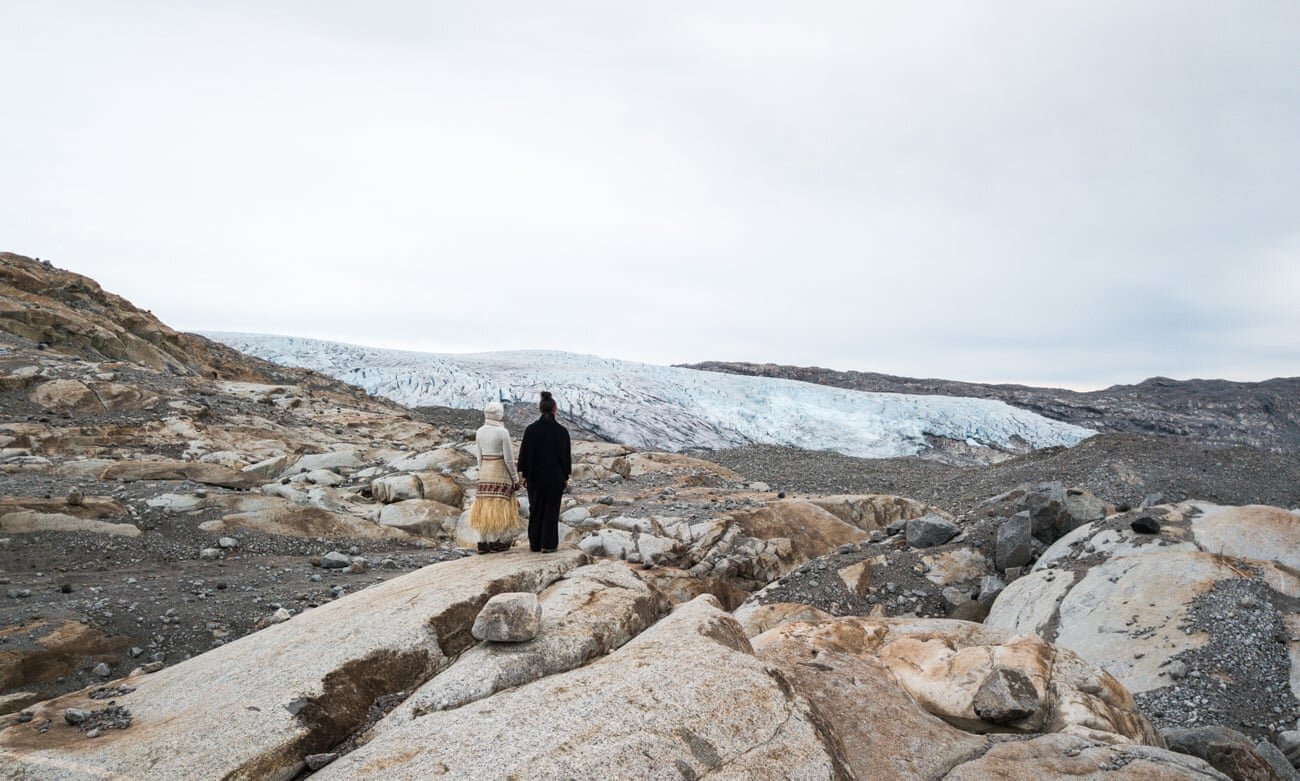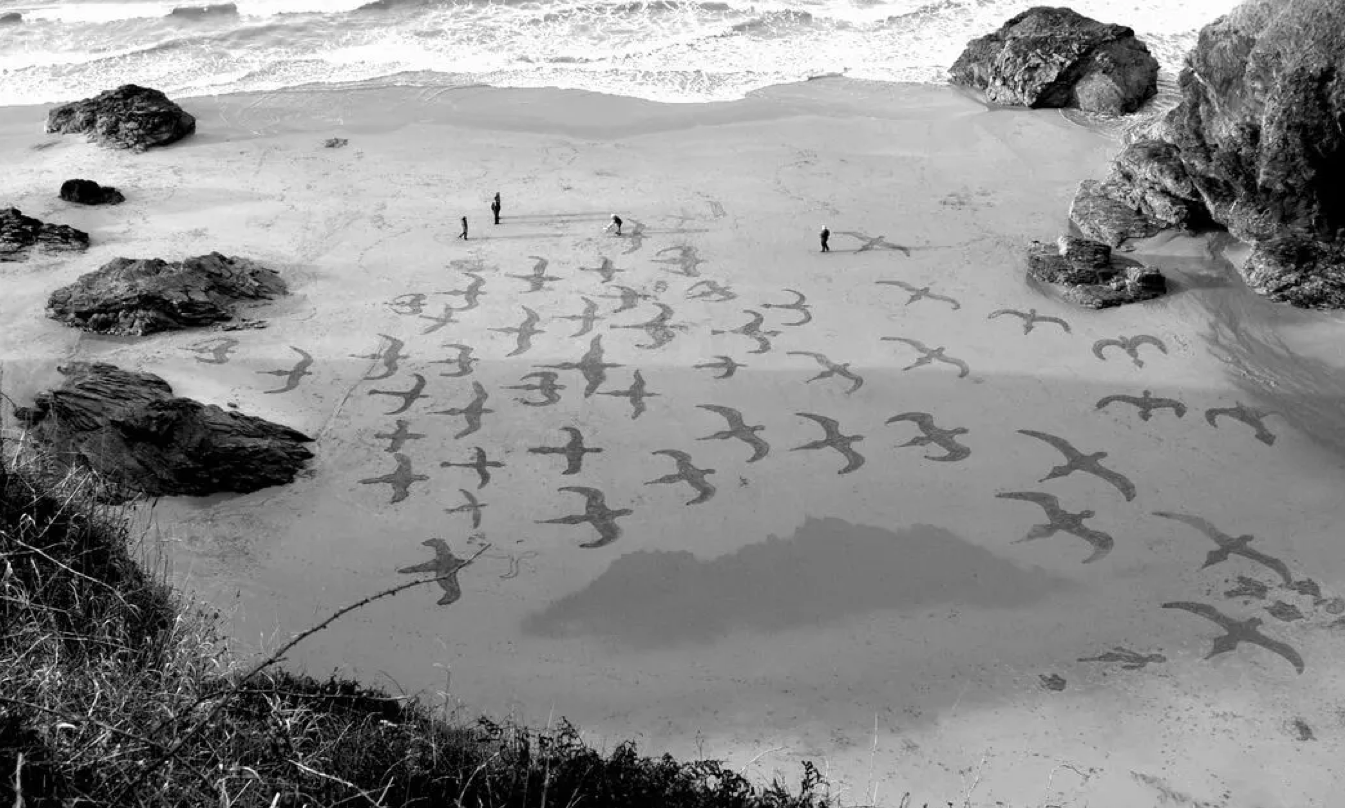
Environmental Arts
Music
Judy Twedt, Connecting to climate change through music
(after watching, you may use this transcript to review content from the talk)
TEDx Seattle. Jan 23, 2019
Summary: "To fight climate change fatigue, researcher Judy Twedt hacked her data and used it to compose music. Her score lets us hear decades of Arctic sea ice loss in just minutes. In the beautiful and sometimes discordant piano piece, played by Kristina Lee, numerical scientific data becomes an emotional experience intended to reconnect us to the rhythm of the planet. Judy Twedt is a fifth-generation Washingtonian who pursued a PhD in atmospheric sciences at the UW to better understand the physics of global climate change. Three years into her research after the reversal of US participation in the Paris Climate Accord, she designed a new PhD program to develop novel ways to increase comprehension of our changing climate — by listening to the vital signs of the planet. She uses climate data to create climate soundtracks with three-dimensional, spatialized sound fields. These soundtracks explore tensions between the time-scales of human experience and that of climate change. She mixes art and science to promote public reckoning with our changing climate and its associated risks." (TEDx Talks)
Questions to consider:
1. Why is it important to take emotion seriously in teaching or discussing environmental issues? How does the translation of Arctic ice data into music help communicate the emotional register of problems like climate change?
2. What are some limitations of statistical representation (charts, graphs) in communicating change over time? How does music help overcome this limitation?
3. What does Twedt's presentation reveal about the way we experience and understand environmental issues through our bodies? You might consider Twedt's comments on rhythm, movement, and muscle memory, but also try to expand on this by thinking broadly about how the human body relates to the physical environment.
Visual Arts
Julia Rosen, "An artist set out to paint climate change. She ended up on a journey through grief."
LA Times, Jan 11, 2020
Please read this article about the work of Portland artist Daniela Molnar, and view the images in her "New Earth" series on Molnar's website.
Questions to consider:
1) Describe some relations between the visual elements in this watercolor series and the environmental issues with which it engages. What particular artistic techniques does Molnar use, and how do these communicate specific concepts or content about our climate crisis?
2) How did Molnar's project become a way of processing grief?
3) In what specific ways might the arts be more effective than (or simply different from) the sciences in communicating ecological concepts or raising questions?
4) If you've also read Rob Nixon's work on the challenges of representing "slow violence," please explain some connections between Nixon's analysis and Molnar's artwork.
Spoken Word Poetry
Bill McKibben, High ice and hard truth: the poets taking on climate change
Also view/listen to Aka Niviana and Kathy Jetnil-Kijiner’s spoken word performance of this piece.
Questions to consider:
1) Many people across the world can speak about climate impacts. What are some effects of pairing these two particular women (from Greenland and the Marshall Islands) in this project? Please list and explore multiple reasons. How and why do the voices of these specific poets (their identities/positions/places of origins) lend power to the poem?
2) How does this spoken word piece engage the social justice aspects of climate change? What are some specific concepts or relations it expresses, and how, specifically, does it do so? How does the piece play with concepts like distance?
3) In one section of the article you read, the glaciologist Alun Hubbard admits that, even as a scientist, he "couldn’t register the scale of how the icesheet had changed in my head.” Do you think these artists succeed in registering those changes? Compared to scientific or statistical representation, how might images, art, and poetry effectively engage with environmental crisis, and/or help mobilize public response?
Memorials / Ritual
Jeremy Hance, Why Don't We Grieve for Extinct Species?
Please read the essay, paying attention to images from the Remembrance Day for Lost Species.
Hance’s essay takes up the question of whose deaths we mourn, whose we do not mourn, and why that matters. Although most of us feel deep personal connections to places and other (nonhuman) lives, Western culture doesn't offer meaningful ways to acknowledge grief for those kinds of losses.
As Judith Butler argues in Precarious Life, our culture is structured by a hierarchy of lives that matter and lives that don't. Some deaths receive elaborate mourning rituals and public tributes, while others are trivialized or ignored. Marginalized groups know how this absence of public grief dehumanizes them, which is why LGBTQ activists, groups seeking justice for murdered indigenous women, and Black Lives Matter all use public protests and vigils to demand that those deaths aren't made invisible. Increasingly, environmental activists also utilize these strategies to call attention to the death of other species, and even the loss of natural features (like the first Icelandic glacier lost to climate change, which was commemorated in a public funeral service).
When we refuse to shield ourselves from the pain of other species' death, we take part in what scholars call "resistant mourning" which "consciously chooses to hold on to feelings of pain and grief to spur a sense of responsibility for the loss" (read source material in Cunsolo and Landman. "To Mourn beyond the Human” 2017).
Examples of rituals and monuments that commemorate ecological loss are discussed in Why Don't We Grieve for Extinct Species?
“Unbearable” is a shared project between Danish Artist Jens Galschiøt and the WWF. See additional monuments to ecological loss.
Questions to consider:
1. What role does ritualized mourning play in helping us process grief? What makes public expressions of mourning important? (as opposed to purely private experiences of grief?)
2. What are some possible consequences or implications of the absence of public mourning following the loss of life? (human or nonhuman)
3. In confronting extinction and ecological loss, what insights or resources can we gain from ritual, memorials, and other creative expressions (like monuments) that might not arise through purely scientific approaches to those issues?
Activity: design your own ritual or memorial
At the end of this essay, Persephone Pearl says "We need to imagine and invent new rituals for the Anthropocene … What would a memorial for the Caspian tiger or the elephant bird look like? A memorial for the Great Barrier Reef? For 350 parts per million of atmospheric CO2?”
Choose an environmental or climate justice issue of personal significance to you. If you were to design a memorial, ritual, or other tribute to commemorate this loss, what would it look like? Describe this in detail, and include visual sketches or other images.

Tying it all together: “Slow Violence”
In considering the four examples above, what strategies do these artists use to address the problem Nixon highlights? What kind of "invisibility" are they trying to make explicit, and how do that achieve that? (or why do they fall short?)
We're used to thinking of violence as something explosive and spectacular that erupts into concentrated visibility: exploding buildings, murdered bodies, burning towers, avalanches and tsunamis. Yet as Robert Nixon argues in his work Slow Violence and the Environmentalism of the Poor (2011), environmental assault often unfolds in invisible ways and is incremental rather than instantaneous. This may involve gradual toxic buildup in our bodies, water, food, and the environments we inhabit. Slow violence can occur through the accumulation of atmospheric CO2 over the course of a century, or the gradual unraveling of life support systems on which certain communities depend. It can involve increasing cancer rates in populations decades after exposure to Agent Orange or radiation, or follow a lifetime of breathing industrial emissions. Since the effects of slow violence are delayed across a range of timescales, they are often hard to pinpoint or trace back to a single source or event.
All of this complicates conventional assumptions of violence as a bounded, explosive act, and raises questions about how we can represent slow violence through story and image. Moreover, "spectacular" forms of disaster are overwhelmingly favored by the media. And of course images like falling bodies and bombs hitting buildings are simply easier to capture, while stories of toxic buildup and damage that roll over a century can be difficult to represent in a single image or frame.
These challenges are central to Nixon's work as he asks how environmentalists might craft stories that capture the delayed effects of slow violence: how can we convert into image and narrative the disasters that are slow-moving and long in the making, that are anonymous and celebrity-deficient? How can we turn the long emergencies of slow violence into images that warrant swift action and decisive political intervention?
In considering the four examples above, what strategies do these artists use to address the problem Nixon highlights? What kind of "invisibility" are they trying to make explicit, and how do that achieve that? (or why do they fall short?)




